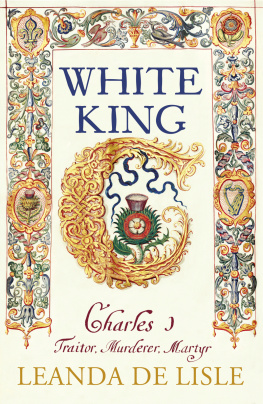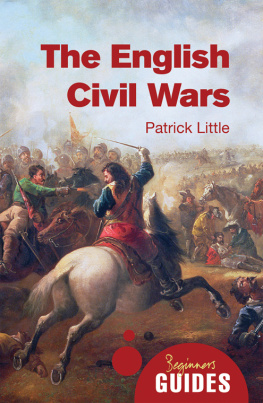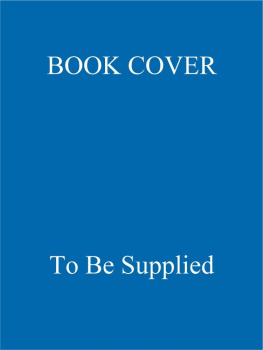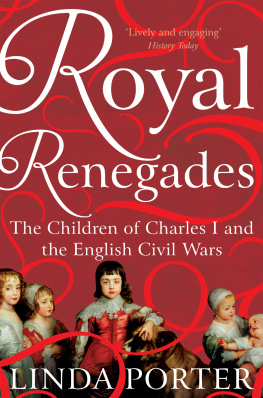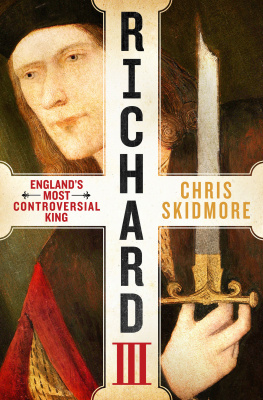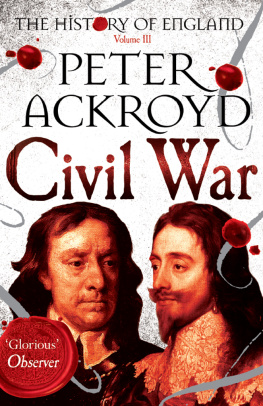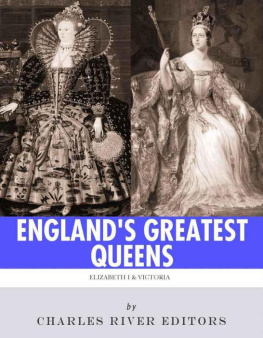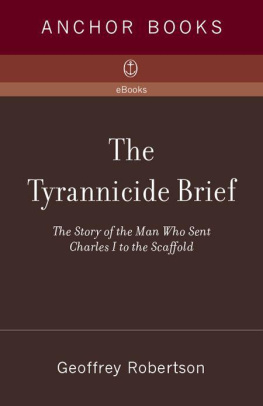Leanda de Lisle - White King: Charles I, Traitor, Murderer, Martyr
Here you can read online Leanda de Lisle - White King: Charles I, Traitor, Murderer, Martyr full text of the book (entire story) in english for free. Download pdf and epub, get meaning, cover and reviews about this ebook. year: 2018, publisher: Vintage Digital, genre: Non-fiction. Description of the work, (preface) as well as reviews are available. Best literature library LitArk.com created for fans of good reading and offers a wide selection of genres:
Romance novel
Science fiction
Adventure
Detective
Science
History
Home and family
Prose
Art
Politics
Computer
Non-fiction
Religion
Business
Children
Humor
Choose a favorite category and find really read worthwhile books. Enjoy immersion in the world of imagination, feel the emotions of the characters or learn something new for yourself, make an fascinating discovery.
- Book:White King: Charles I, Traitor, Murderer, Martyr
- Author:
- Publisher:Vintage Digital
- Genre:
- Year:2018
- Rating:3 / 5
- Favourites:Add to favourites
- Your mark:
White King: Charles I, Traitor, Murderer, Martyr: summary, description and annotation
We offer to read an annotation, description, summary or preface (depends on what the author of the book "White King: Charles I, Traitor, Murderer, Martyr" wrote himself). If you haven't found the necessary information about the book — write in the comments, we will try to find it.
Barely forty years after the Englands golden age under Elizabeth, the country was at war with itself, split between loyalty to the Crown and Parliament, with armies raised in Scotland and Ireland, and fighters arriving from Europe to wage war on English soil for the last time in Englands history. The English Civil War would set family against family, friend against friend, and its casualties were immensea greater proportion of the population than in World War I. England had become a failed state.
At the head of the disintegrating kingdom was the figure of the king: Charles I. In this vivid portraitnewly informed by previously unseen manuscripts, including royal correspondence between the king and his queen, some of it written in codeLeanda de Lisle depicts a man who was not cruel enough for his cruel times. He would not persecute his opponents in the bloody style of his Tudor antecedents, or throw his servants to the wolves to save his own skin in the time-honored royal style. He was tutored by his father in the rights and obligations of kings, but had none of his fathers political subtlety and experience in survival. In a court of remarkable women he was happily marriedbut to a French Catholic princess, which caused consternation to his protestant subjects. Principled and high minded, he would pay a terrible price for the personal honor he so valued, and for having enemies more ruthless than he was. Nothing, however, would reflect on his character as much as the scene at his terrible death, speaking on the scaffold as a martyr of the people.
In his own destruction Charles did not sow the seeds of the monarchys destruction but its rebirth. Englands revolution lasted eleven unhappy years and the Crown was then restored, to national rejoicing. Today England enjoys rule by parliament and monarch while the Church of England has the bishops Charles was determined to preserve. More radical religious experimenters took their faith to the New World and the seeds of a republic, leaving England to mend its wounds and restore its fortunes and future as the worlds preeminent constitutional monarchy.
Leanda de Lisle: author's other books
Who wrote White King: Charles I, Traitor, Murderer, Martyr? Find out the surname, the name of the author of the book and a list of all author's works by series.

